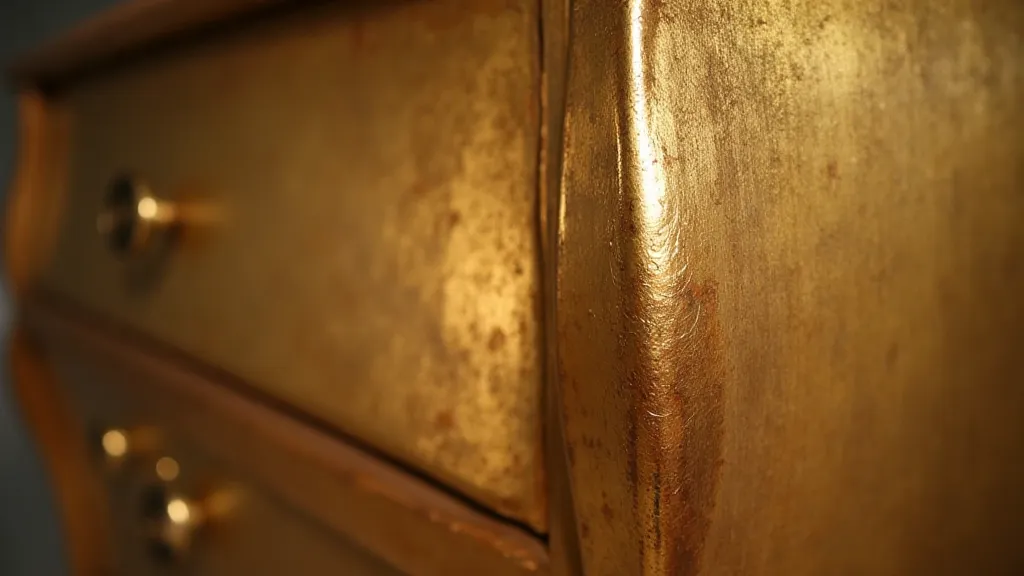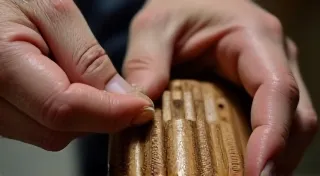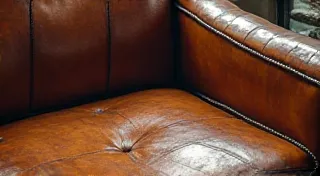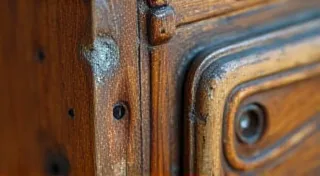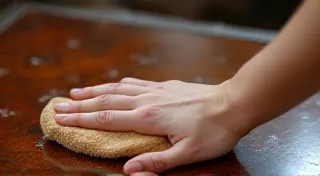The Art of Regilding: Restoring Gilt Details on Antique Furniture
Gilding, the application of gold leaf to furniture, was a common and highly valued decorative technique used throughout history, particularly in the 18th and 19th centuries. Today, many antique pieces boast stunning gilt details, but time, wear, and improper cleaning can leave them faded, chipped, or even completely lost. Regilding – the process of restoring these gold details – can be a complex undertaking, but with patience, practice, and the right techniques, it's a rewarding way to breathe new life into treasured antique furniture. This guide will walk you through the key steps involved.
Understanding the Existing Gilding
Before you even think about applying gold leaf, carefully examine the existing gilding. Determine the type of gold used (typically gold leaf, but sometimes powdered gold or a gilded paint). Identify the underlying layer – is it gesso, bole, or something else? Knowing what you’re working with will inform your preparation process. Gently test the stability of the existing gilding; loose areas need to be carefully consolidated. The condition of the underlying layers is paramount; damage or deterioration here will impact the final outcome. Sometimes, assessing the wood itself requires a deeper dive, which may involve examining different wood types to understand their properties and how they react to restoration processes. If you’re unsure about the wood type, resources like Understanding Antique Furniture Wood Types can be incredibly helpful.
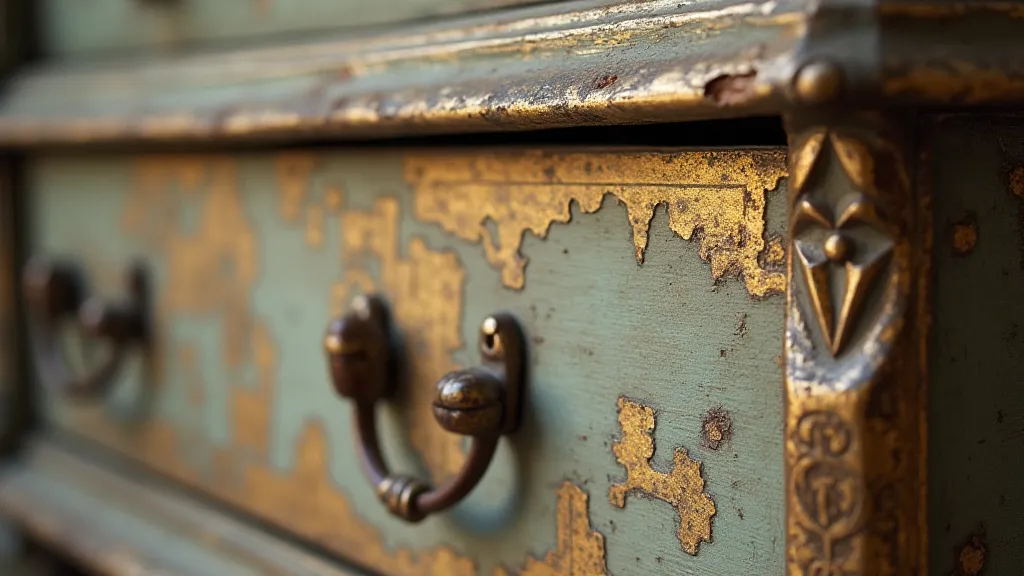
Preparation: The Foundation of a Successful Regilding
Proper preparation is absolutely critical. A poorly prepared surface will result in a subpar finish that won’t adhere well and will be prone to flaking. The steps involved generally include:
- Cleaning: Gently remove dirt, grime, and loose gilding. Avoid harsh chemicals that can damage the underlying layers. This often involves carefully removing layers of old finishes, which can be a challenging process in itself. Exploring safe and effective methods for Stripping Old Finish from Antique Furniture is essential for preserving the integrity of the piece.
- Repairing Damage: Fill any chips, cracks, or gouges with a compatible filler, ensuring a level surface. The choice of filler is crucial; it must be compatible with the existing materials and not cause any adverse reactions over time.
- Sealing: Apply a sealant to stabilize the existing layers and prevent further deterioration. This creates a barrier against moisture and helps to prevent the underlying materials from further decay.
- Gessoing (if necessary): In many cases, a new layer of gesso is needed to create a smooth, white base for the gold leaf to adhere to. Apply thin, even coats, allowing each coat to dry completely. The quality of the gesso significantly impacts the final gold leaf adhesion and appearance.
- Bole Application (Traditional Method): Traditionally, bole – a clay-based layer – is applied over the gesso to provide a slightly textured surface that holds the gold leaf more effectively. This step is often omitted in modern regilding due to time constraints. While often skipped for expediency, understanding the purpose and function of bole offers valuable insight into the historical gilding process.
The tools used throughout this preparation phase are vital to success. Often, antique furniture restorers need a wide range of equipment to tackle diverse challenges. Learning about the Tools of the Trade: Essential Equipment for Antique Furniture Restoration is a worthwhile investment for anyone looking to delve deeper into furniture restoration.
Applying the Gold Leaf
Gold leaf is incredibly delicate and requires a gentle touch. Here’s a breakdown of the application process:
- Tools: You’ll need a gilding brush (soft, squirrel-hair brushes are ideal), burnishing tools, and a soft cloth. The quality of the gilding brush drastically affects the ease and success of applying the leaf.
- Working Environment: Gilding requires a clean, dust-free environment. Even the smallest speck of dust can compromise the appearance of the finished gilding.
- Application Technique: Gently pick up a sheet of gold leaf using the gilding brush. Carefully position the leaf onto the prepared surface, slowly laying it down without creasing or tearing. Overlap the edges of each sheet slightly. The process is like working with liquid gold; it demands patience and a steady hand.
- Burnishing: Once the gold leaf is in place, burnish it with a burnishing tool or a soft cloth to create a smooth, even surface and to press the gold into the underlying layers. Proper burnishing ensures the gold adheres well and provides a lustrous sheen.

Sealing and Protection
Once the gold leaf is burnished, it needs to be protected from damage and tarnishing. Several sealing options exist:
- Traditional Varnish: A carefully chosen varnish can protect the gold leaf and enhance its luster. Apply thin, even coats, allowing each coat to dry completely. Choosing the correct varnish involves understanding its chemical properties and how it will interact with the gold leaf.
- Acrylic Sealants: Modern acrylic sealants offer excellent protection and UV resistance. These provide a durable and long-lasting barrier against environmental factors.
- Waxing: Waxing can provide a soft sheen and extra protection. However, waxing requires regular maintenance to preserve its effectiveness.
Often, the artistry of regilding extends beyond simply applying gold leaf. Complex designs and intricate details might incorporate techniques like marquetry, where decorative veneers are inlaid into the surface. Those interested in expanding their restoration skills could explore Restoring Marquetry on Antique Furniture: Techniques & Materials to learn about this beautiful art form.
Important Considerations
- Practice: Gilding is an art that requires practice. Start with small, inconspicuous areas to hone your skills. Begin with simple shapes and gradually progress to more complex designs.
- Patience: Regilding is a time-consuming process. Don't rush any of the steps. The best results are achieved through careful and deliberate execution.
- Safety: Wear appropriate safety gear, including a dust mask and gloves. Gold dust can be harmful if inhaled.
- Historical Accuracy: If you're restoring a historically significant piece, research the original gilding techniques and materials to ensure accuracy. This might involve consulting historical records and analyzing surviving examples of similar pieces.
- Understanding the Wood's Response: The wood substrate's characteristics impact how it accepts gesso, bole, and gold leaf. Different wood species react differently to moisture and adhesives, which must be considered for long-term stability.
